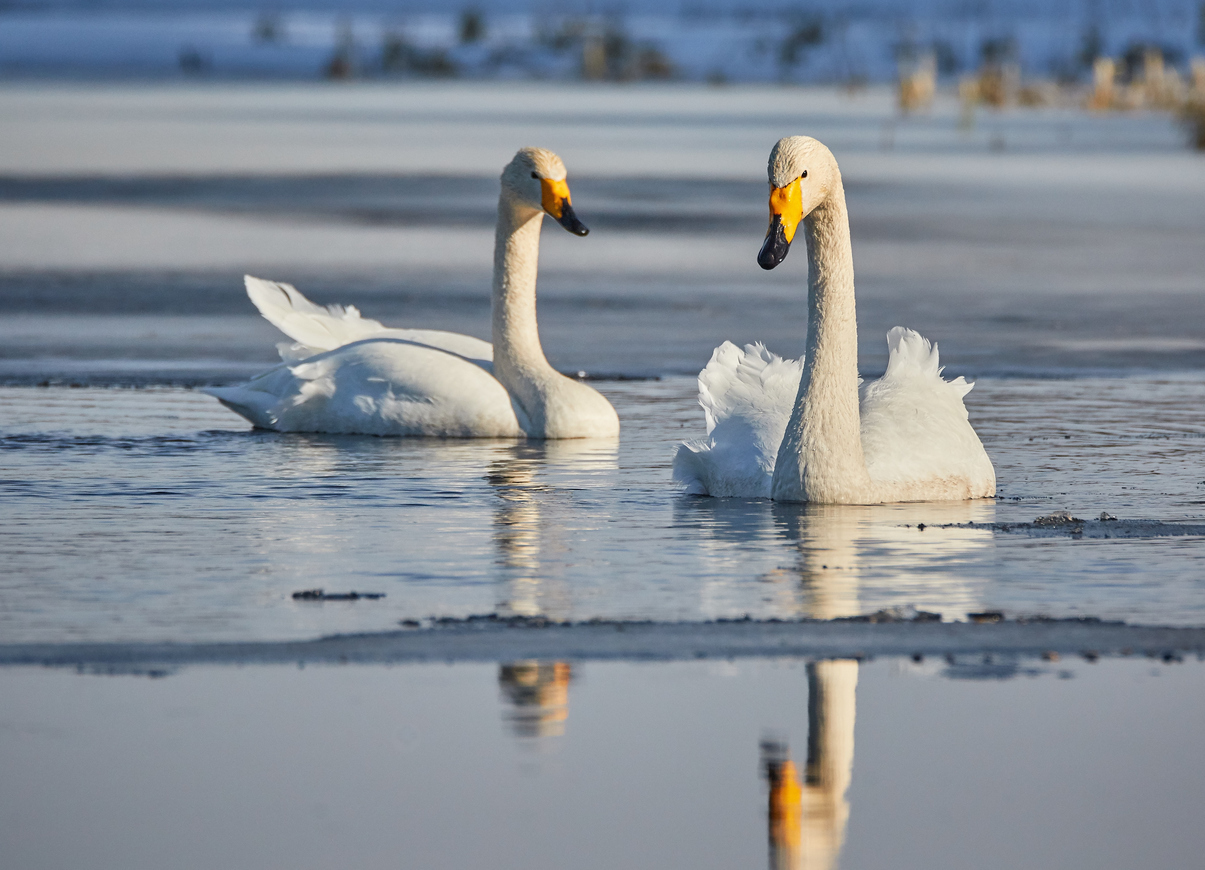There was not a breath of wind, not a penny whisper out on the mirror calm wispy-misted lochan where the four whooper swans drifted. It was a scene that could have been brushed from an artist’s palette; a picture perfection of a Scottish winter lochscape in all its beguiling serenity.
Out walking in Perthshire with four friends, we had just stumbled upon Loch of Grandtully in the vast Griffin Forest near Aberfeldy. It was like finding a sparkling oasis and as we moved slightly up the trail to get a better view of the swans, a flock of teal sprung into the air and circled the lochan. These little ducks whistled as they wheeled and dipped, a soft piping that mirrored the gentleness of the water.
We had already passed by Loch Kennard and Loch Scoly, both of which were totally devoid of waterfowl, so to discover the swans and teal on this last lochan on our route was something of a surprise, especially since it was partially iced over.
The gap in the spruces overlooking the lochan was narrow and the whoopers slipped tantalisingly in and out of view. This family group consisted of two adults and two dowdier first-year birds. Whooper swans are so very special, displaying grace and grandeur yet with an innate shyness that makes them hard to approach, and as such, they generally prefer our less disturbed lochs.
These whoopers at Grandtully brought back fond memories of previous encounters, especially the excitement of watching an incoming family flight. In they swoop, long necks extended, the air thrumming from the rhythmic swish of powerful wings digging deep into the cold winter air. The elegant formation makes a final bank before descending onto the water’s surface, which erupts into a trailing splatter of spume as the swans abruptly come to rest. It is unforgettable stuff.
Not long after spotting the whoopers, we were in for another surprise. Ahead of us, a red deer stag strutted across the forest track. The antlers were well forked and he displayed a thick shaggy ruff on his neck and shoulders, a sure sign of a mature stag. We tend to think of red deer as creatures of the open hill, but they are woodland animals at heart and will haunt such areas if given the opportunity.
At this time of year, stags and hinds form single sex herds, but this male was a solitary beast, probably because the thickly planted spruces within this forest make herding an impractical option. There will be precious little vegetation for deer to eat within the gloom of the plantation, but the abundant grasses, lichens and dwarf shrubs by the open forest edge will provide good grazing.
Further on, and a thin elongated sliver of black shiny poo caught my eye atop a small mossy knoll. It was the dropping of a pine marten and a warning marker to other martens that this territory is already taken.
Info
Whooper swans are winter visitors, mostly from Iceland, although a few may also come from breeding populations in northern Norway and Russia. Loch Leven in Kinross-shire is a great place to see whoopers.










